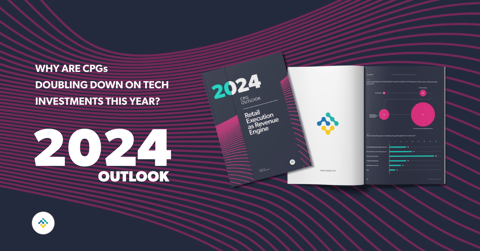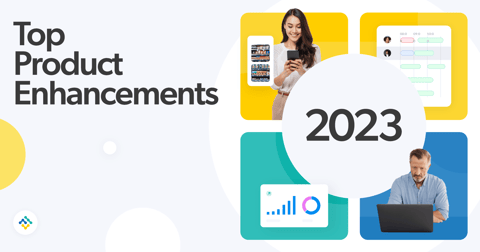In the CPG space, it seems like everyone is talking about data. From sales data to field activity data, store-level data to marketwide syndicated data, understanding how CPG data insights can help your brand is key to succeeding in today’s market. But with so many methods of finding, collecting, and analyzing data, how is anyone ever supposed to extrapolate anything meaningful from such a vast array of metrics?
In this post, we’ll discuss CPG data insights from the global level down to the individual. Below, you’ll find an infographic of marketwide CPG data insights to help brands understand the current state of their market. Then, we zoom in and discuss individual brand-level data, and how developing a data-driven strategy is the key to success in the CPG industry.
Marketwide CPG Data Insights
Understanding marketwide trends is a major item on the checklist of data-driven teams. Before you can start interpreting insights from your brand-level data, you first need a firm grasp on the state of the market. Marketwide CPG data provides brands with a snapshot of their market as a whole. This data can be global or regional.
As the CPG space grows, increased competition also brings increased opportunity. According to an IRI study, brands generating annual sales under $1 billion accounted for 51% of New Product Pacesetters (NPPs) in 2018, while companies exceeding $5 billion in sales only rose account for 22%. Additionally, data from Statista predicts an $86 billion dollar increase in US CPG industry gross sales over 2015 numbers by 2020. Check out these statistics and more in the infographic below.
Marketwide CPG data can enable brands to draw insights about their category as a whole. For example, let’s pretend we are a young protein bar brand looking to expand our market share. Knowing that extra-small brands are taking over the CPG space tells us that large conglomerates aren’t our immediate competition, and that we should focus on boxing out other small companies. Another insight that can be drawn from the above data is that competitive CPG brands should be investing in omnichannel presence, as online CPG sales are increasing at an exponential rate compared to brick & mortar.
Brand-Level CPG Data Insights
Now that we’ve gone over how to use marketwide CPG data insights, let’s talk about how more granular, brand-level CPG data insights can inform your company’s decision making. Rather than providing insights on the broader market, brand-level data explores trends that are specific to your category, region, and brand. This may include store-level retail execution data, sales velocity, field activity data, competitor data, and more.
Going back to our example from above, marketwide data can only tell us so much. While we now know our competition is other small brands, we don’t know which small brands are fighting for our facings. Additionally, while overall industry trends show a progression toward omnichannel and online sales, our target audience may tend to look for our product elsewhere. This is where brand specific data comes into play.
How to Collect Brand-Level Data
While marketwide data is available publicly or for purchase, it’s often up to brands to collect data about their own retail sales that goes beyond simple POS reports.
One big opportunity for brands is to leverage their field teams to collect brand-level data while making account calls. The most obvious place to start is tracking where your product is sold. Are you in the cooler or on the warm shelf? End cap or dump bin? Comparing product placement with store-level sales gives brands a complete picture of what could be driving sales at successful accounts.
Next up, consider comparing your team’s sales activity with actual sales off the shelf. That’ll give you a picture of exactly what levers your team has to control velocity, and help you determine which is most impactful. How often should your reps visit their stores? What’s more useful: merchandising shelves, educating retail staff, or handing out coupons? Tracking sales activity in the field helps brands understand exactly how they can affect sales in the store.

![How to Use CPG Data Analytics to Grow Your Brand [Infographic]](jpg/aisle-bags-buy-811110-minc924.jpg?width=1200&height=630&name=aisle-bags-buy-811110-min.jpg)


